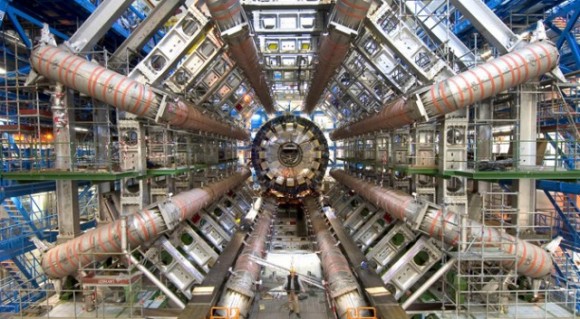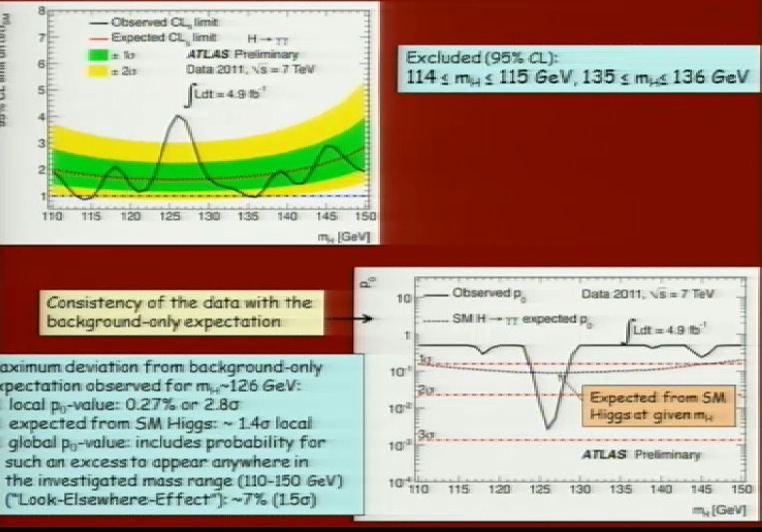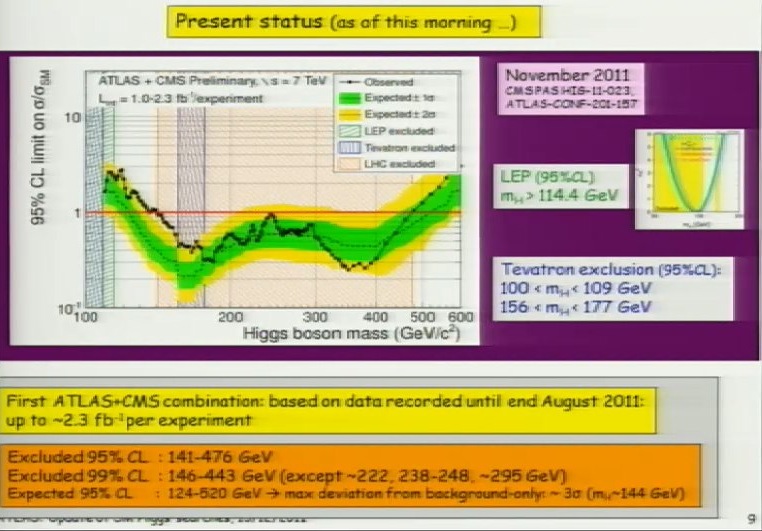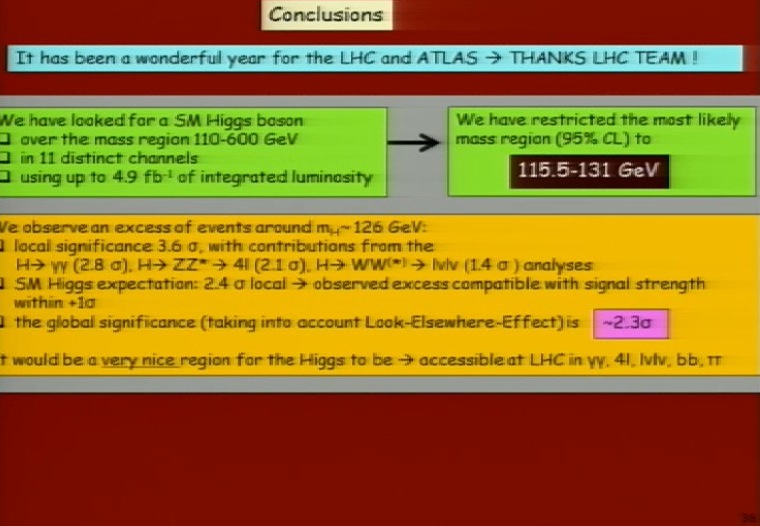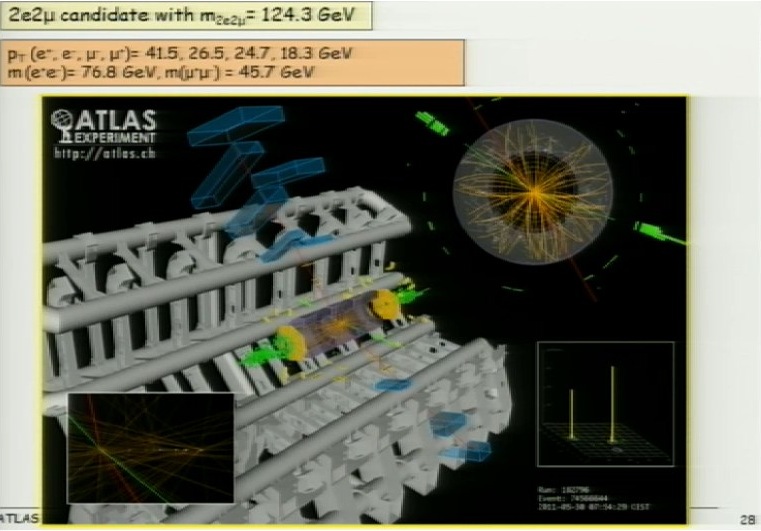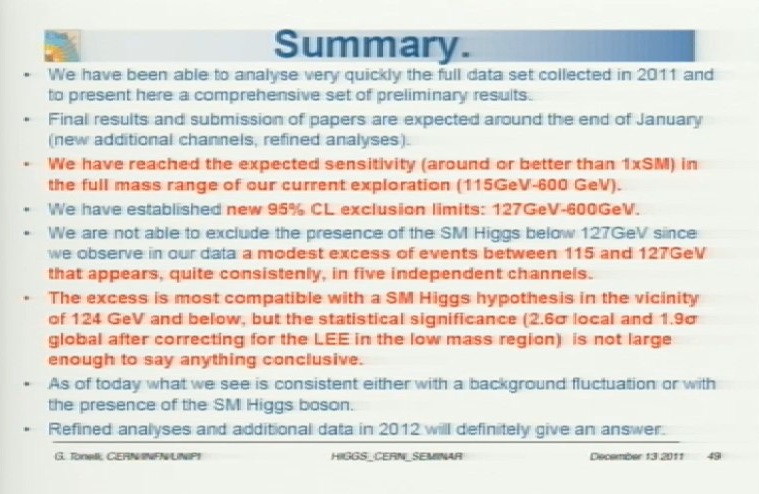CERN Finds "Tantalizing Hints" Of Higgs Boson
Scientists at the Large Hadron Collider (LHC) believe they may have spotted signs of the Higgs boson, it has been announced this morning, though the recorded evidence "is not large enough to say anything conclusive." In a comprehensive presentation of the latest results from the particle-smashing Atlas and CMS experiments today, scientists in Geneva suggested that the output "is consistent either with a background fluctuation or the present of the SM Higgs boson."
That evidence presents as a set of consistent spikes or "modest excess of events" that occur between 115 and 127 gigaelectronvolts (GeV), with the prediction that the multiple independent measurements at 124 to 126 GeV are the most likely to be signs of the Higgs boson, if it exists. If they can identify it, the hope is that CERN scientists could lead the way in developing a new physics model to replace or augment the existing Standard Model, the theory of fundamental particles and forces.
Such a new model would address the huge amount of the universe that is invisible, though the experiments set to continue in 2012 will only open the door to that rather than prove anything conclusive.
"Higgs bosons, if they exist, are very short lived and can decay in many different ways. Discovery relies on observing the particles they decay into rather than the Higgs itself. Both ATLAS and CMS have analysed several decay channels, and the experiments see small excesses in the low mass region that has not yet been excluded" CERN
"Tantalising hints have been seen by both experiments in this mass region," the teams conclude, "but these are not yet strong enough to claim a discovery." Full papers on the results are expected to be presented by the end of January 2012, and CERN expects to have the full answer by the end of next year.

